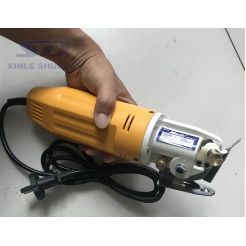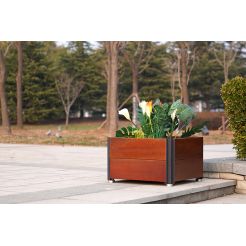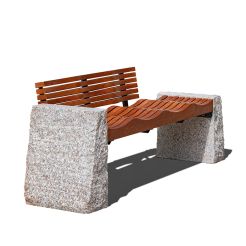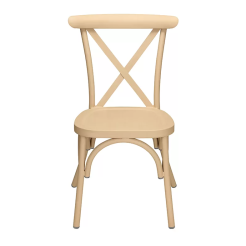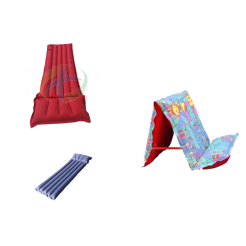Rotary Tiller-Rotary cultivator
The rotary tiller adopts a central high-strength ductile iron box, which has more reliable and stable performance. The blade shaft body adopts an upgraded thickened seamless steel pipe to increase the service life and application range.
Product Description
Rotary Tiller
Rotary tiller is a tilling machine that is used with a tractor to complete plowing and harrowing operations. It has been widely used because of its strong soil crushing ability and flat surface after plowing. At the same time, it can cut the root stubble buried below the surface, which is convenient for the seed drill to operate and provide a good seed bed for later sowing.
According to the configuration of the rotary tiller shaft, it is divided into three types: horizontal shaft type, vertical shaft type and inclined shaft type. Correct use and adjustment of the rotary tiller is very important to maintain its good technical condition and ensure the quality of tillage.
The rotary tiller has the functions of breaking the plow bottom layer, restoring the soil tillage layer structure, improving the soil's ability to store water and retain moisture, eliminating some weeds, reducing pests and diseases, leveling the surface, and improving the standard of agricultural mechanization operations.
A driven soil tillage machine with rotating blades as working parts is also called a rotary tiller. According to the configuration of the rotary tillage blade shaft, it is divided into two types: horizontal shaft type and vertical shaft type. Horizontal shaft rotary tillers with the blade shaft horizontally placed are more commonly used. Classification has a strong soil crushing ability, which can make the soil finely crushed in one operation, the soil and fertilizer mixed evenly, and the ground level, meeting the requirements of dryland sowing or paddy field planting, which is conducive to gaining farming time, improving work efficiency, and making full use of the power of the tractor. However, the coverage ability of stubble and weeds is poor, the tillage depth is shallow (dry tillage 12 to 16 cm; water tillage 14 to 18 cm), and the energy consumption is large. It is mainly used in rice fields and vegetable fields, and also used for orchard tillage. The tillage depth of heavy-duty horizontal shaft rotary tillers can reach 20 to 25 cm, and they are mostly used to reclaim shrubs, swamps and grass wastelands.
Technical Feature:
The rotary tiller adopts a central high-strength ductile iron box, which has more reliable and stable performance. The blade shaft body adopts an upgraded thickened seamless steel pipe to increase the service life and application range.
Technical Specification:
|
Model Number |
1GQN-125 |
|
Structure type |
Frame Type |
|
Size (mm) |
990×1430×1000 |
|
Operating Speed(m/s) |
0.5-1.0 |
|
Operating Width (mm) |
125 |
|
Cutter shaft type |
Single axis |
|
Knife Roll Radius of gyration (mm) |
Max 225 |
|
Knife Roll Number (PC) |
32 |
|
Rotary tillage blade model |
IT245 |
|
Rated power range of matching tractors (kw) |
14.7-22.1 |
|
Model Number |
1GQN-140 |
|
Structure type |
Frame Type |
|
Size (mm) |
990×1580×1100 |
|
Operating Speed(m/s) |
0.5-1.0 |
|
Operating Width (mm) |
140 |
|
Cutter shaft type |
Single axis |
|
Knife Roll Radius of gyration (mm) |
Max 225 |
|
Knife Roll Number (PC) |
32 |
|
Rotary tillage blade model |
IT245 |
|
Rated power range of matching tractors (kw) |
25.7-36.8 |
|
Model Number |
1GQN-150 |
|
Structure type |
Frame Type |
|
Size (mm) |
990×1580×1100 |
|
Operating Speed(m/s) |
0.5-1.0 |
|
Operating Width (mm) |
140 |
|
Cutter shaft type |
Single axis |
|
Knife Roll Radius of gyration (mm) |
Max 225 |
|
Knife Roll Number (PC) |
32 |
|
Rotary tillage blade model |
IT245 |
|
Rated power range of matching tractors (kw) |
25.7-36.8 |
|
Model Number |
1GQN-160 |
|
Structure type |
Frame Type |
|
Size (mm) |
1500×1860×1140 |
|
Operating Speed(m/s) |
0.5-1.0 |
|
Operating Width (mm) |
160 |
|
Cutter shaft type |
Single axis |
|
Knife Roll Radius of gyration (mm) |
Max 245 |
|
Knife Roll Number (PC) |
44 |
|
Rotary tillage blade model |
IT245 |
|
Rated power range of matching tractors (kw) |
25.7-33.1 |
|
Model Number |
1GQN-180 |
|
Structure type |
Frame Type |
|
Size (mm) |
1500×1860×1140 |
|
Operating Speed(m/s) |
0.5-1.0 |
|
Operating Width (mm) |
160 |
|
Cutter shaft type |
Single axis |
|
Knife Roll Radius of gyration (mm) |
Max 245 |
|
Knife Roll Number (PC) |
44 |
|
Rotary tillage blade model |
IT245 |
|
Rated power range of matching tractors (kw) |
25.7-33.1 |
|
Model Number |
1GQN-200 |
|
Structure type |
Frame Type |
|
Size (mm) |
1520×2380×1200 |
|
Operating Speed(m/s) |
0.55-1.66 |
|
Operating Width (mm) |
200 |
|
Cutter shaft type |
Single axis |
|
Knife Roll Radius of gyration (mm) |
Max 245 |
|
Knife Roll Number (PC) |
60 |
|
Rotary tillage blade model |
IT245 |
|
Rated power range of matching tractors (kw) |
66.2-88.2 |
|
Model Number |
1GQN-230 |
|
Structure type |
Frame Type |
|
Size (mm) |
1520×2620×1200 |
|
Operating Speed(m/s) |
0.55-1.66 |
|
Operating Width (mm) |
230 |
|
Cutter shaft type |
Single axis |
|
Knife Roll Radius of gyration (mm) |
Max 245 |
|
Knife Roll Number (PC) |
64 |
|
Rotary tillage blade model |
IT245 |
|
Rated power range of matching tractors (kw) |
73.5-110.3 |
|
Model Number |
1GQN-250 |
|
Structure type |
Frame Type |
|
Size (mm) |
1520×2820×1200 |
|
Operating Speed(m/s) |
0.55-1.66 |
|
Operating Width (mm) |
250 |
|
Cutter shaft type |
Single axis |
|
Knife Roll Radius of gyration (mm) |
Max 245 |
|
Knife Roll Number (PC) |
72 |
|
Rotary tillage blade model |
IT245 |
|
Rated power range of matching tractors (kw) |
88.2-117.6 |
|
Model Number |
1GQN-280 |
|
Structure type |
Frame Type |
|
Size (mm) |
1520×3060×1200 |
|
Operating Speed(m/s) |
0.55-1.66 |
|
Operating Width (mm) |
280 |
|
Cutter shaft type |
Single axis |
|
Knife Roll Radius of gyration (mm) |
Max 245 |
|
Knife Roll Number (PC) |
80 |
|
Rotary tillage blade model |
IT245 |
|
Rated power range of matching tractors (kw) |
88.2-132.3 |
|
Model Number |
1GQN-300 |
|
Structure type |
Frame Type |
|
Size (mm) |
1250×3240×1285 |
|
Operating Speed(m/s) |
0.55-1.66 |
|
Operating Width (mm) |
300 |
|
Cutter shaft type |
Single axis |
|
Knife Roll Radius of gyration (mm) |
Max 245 |
|
Knife Roll Number (PC) |
80 |
|
Rotary tillage blade model |
IT245 |
|
Rated power range of matching tractors (kw) |
88.2-132.3 |
Use of machinery:
1. At the beginning of the operation, the rotary tiller should be in the lifting state, first engage the power output shaft to increase the blade shaft speed to the rated speed, and then lower the rotary tiller so that the blade gradually enters the soil to the required depth. It is strictly forbidden to engage the power output shaft or sharply lower the rotary tiller after the blade enters the soil, so as to avoid bending or breaking the blade and increasing the load on the tractor.
2. During the operation, the speed should be as low as possible, which can not only ensure the quality of the operation, make the soil clods fine, but also reduce the wear of the machine parts. Pay attention to whether the rotary tiller has noise or metal knocking sound, and observe the soil crushing and tillage depth. If there is any abnormality, stop the machine immediately for inspection, and continue the operation after eliminating it.
3. When turning at the end of the field, it is forbidden to work. The rotary tiller should be raised to make the blade leave the ground, and the tractor throttle should be reduced to avoid damaging the blade. When lifting the rotary tiller, the inclination angle of the universal joint should be less than 30 degrees. If it is too large, it will produce impact noise, causing it to wear or damage prematurely.
4. When reversing, crossing ridges, and transferring plots, the rotary tiller should be lifted to the highest position and the power should be cut off to avoid damage to the machine parts. If transferring to a distant place, the rotary tiller should be fixed with a locking device.
5. The rotary tiller should be maintained after each shift. Clean the dirt and weeds on the blades, check the tightness of each connection, add lubricating oil to each lubricating oil point, and add butter to the universal joint to prevent aggravated wear.
Mechanical adjustment:
1. Left and right horizontal adjustment. Stop the tractor with the rotary tiller on a flat ground, lower the rotary tiller so that the blade is 5 cm from the ground, and observe whether the height of the left and right blade tips is consistent to ensure that the blade axis is level and the tillage depth is uniform during operation.
2. Front and rear horizontal adjustment. When the rotary tiller is lowered to the required tillage depth, observe whether the universal joint angle and the rotary tiller axis are close to the horizontal position. If the universal joint angle is too large, adjust the upper pull rod to make the rotary tiller in a horizontal position.
3. Lifting height adjustment. During rotary tillage operation, the universal joint angle is not allowed to be greater than 10 degrees, and it is not allowed to be greater than 30 degrees when turning at the head of the field. Therefore, for the lifting of the rotary tiller, for those using position adjustment, the limit screw can be tightened at the appropriate position of the handle; for those using height adjustment, special attention should be paid when lifting. If the rotary tiller needs to be raised again, the power of the universal joint should be cut off.


